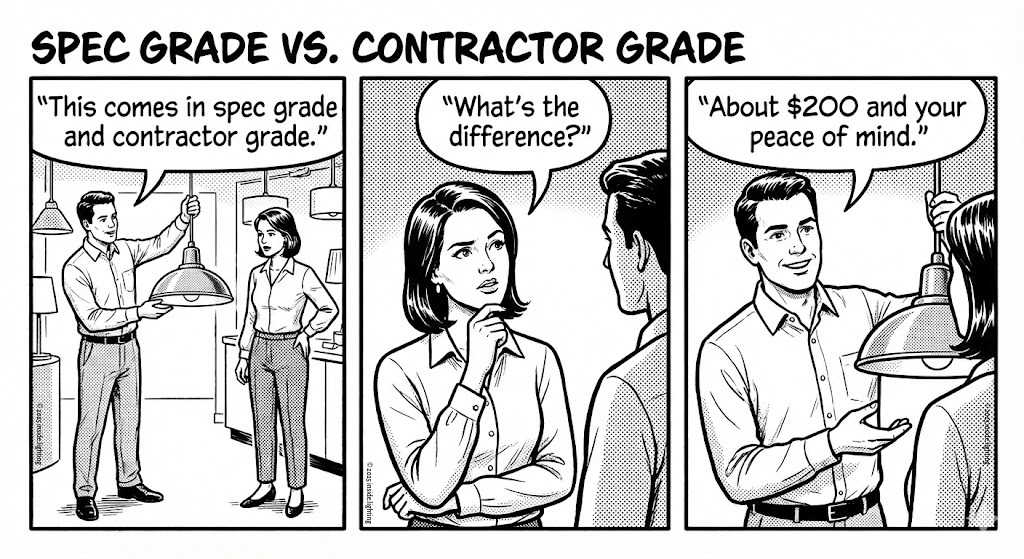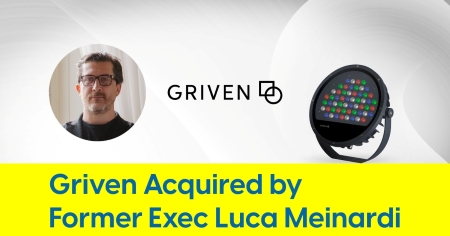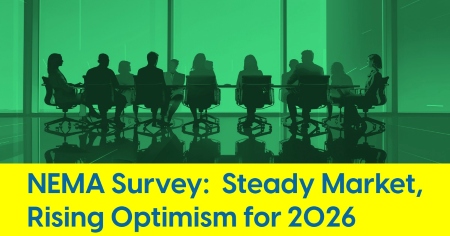October 15, 2025
IES Secures New Revenue Via Association Management Deal

Colleen Harper and Graham Kirk return to familiar ground in shared leadership roles
The Illuminating Engineering Society (IES) will soon take on day-to-day management duties for the Audio Engineering Society (AES), under a shared resource agreement set to begin December 16, 2025. While the two professional societies remain legally and missionally separate, the new setup marks a formal relationship where IES serves as the service provider and AES becomes the client — paying IES to run core operations like membership support, event planning, finance, and general administration.
It’s not a merger, not a rebranding, and not an attempt to unify lighting and audio standards. It is, however, a familiar structure in the world of professional associations — commonly referred to as a shared management agreement. These arrangements allow smaller or restructuring organizations to gain professionalized services from a stable partner without building a full in-house team.
“We’re committed to supporting like-minded technical societies,” said IES President Wilson Dau. “This collaboration strengthens AES while creating long-term strategic value for IES.”
Leadership Comes Full Circle
In a move that adds continuity to the transition, Colleen Harper will serve as Executive Director of both organizations. Harper previously led AES from 2019 to 2022, and since then has served as CEO/Executive Director of IES. She will not get a new additional salary from AES. Her time and compensation will be shared between the two organizations, with AES reimbursing IES for her leadership and the support of other IES staff.
We asked Harper how she plans to take on two separate roles that, for the last seven years, she herself held as full-time, individually demanding positions. She acknowledged the weight of the challenge but pointed to recent organizational shifts that make the dual role more sustainable. “When I worked at AES before, we simply didn’t have enough people to do all the work,” she said. “Here at IES, we’ve been in crisis mode until recently. Now that finances are stabilized and the Society is poised for growth, the timing is right to make key hires and build a model where we can all be effective across both organizations.”
Harper also notes she’ll continue dedicating time to NCQLP (National Council on Qualifications for the Lighting Professions), another entity managed by IES since January 2023.
Joining Harper in this dual-capacity model is Graham Kirk, who worked alongside Harper during her previous tenure at AES. Now the Director of Business Operations at IES, Kirk will split his time in the same role across both organizations. For both Harper and Kirk, the move represents a homecoming of sorts — and a second chance to build on past momentum.
AES President Gary Gottlieb emphasized the value of continuity: “The last time we had this winning staff combination, AES saw measurable gains in membership and event attendance. This shared arrangement brings us back to that successful formula, while giving us access to IES’s broader infrastructure.”
New Hires. And Some Rebalancing.
IES has announced it will add three new staff members to support the increased workload. That includes a Director of Membership who will serve both IES and AES, a Director of Events and Business Development focused solely on IES, and a yet-to-be-finalized administrative or marketing support role.
But this “plus three” comes on the heels of a “minus two.” IES recently saw the departure of staffers Michael Austerlitz and Klysha Ross. The new hires are not direct replacements, but a strategic realignment. Harper notes the new roles are designed with broader scope and more cross-functional flexibility — part of an effort to structure staff around future opportunities, not just backfill vacant desks.
At AES, the transition also comes with staffing changes. The society’s current support team — provided by external association management firm MCI, including Executive Director Emily Burch — will step away in mid-December, when the IES arrangement takes effect.
Strategic Value Without Mission Creep
The new partnership brings IES a steady new revenue stream — an appealing benefit in an era when many nonprofit societies are looking to diversify income without overburdening members. For AES, the deal offers professionalized infrastructure without the cost and risk of building it in-house.
Harper emphasizes that this model is built on alignment, not absorption. “This arrangement empowers AES to focus squarely on serving its members and advancing audio innovation,” she said. “At the same time, it gives IES a clear and manageable way to grow.”
And despite the shared staff and shared goals around efficiency, there will be no mingling of content, standards, or professional focus between the lighting and audio worlds. This is about operational collaboration — not conceptual convergence.
As more associations navigate constrained budgets and rising expectations, this kind of resource-sharing model has already been proven in other industries. For now, it’s a tailored solution that allows both organizations to focus on what they do best — with a little help from some old friends.










